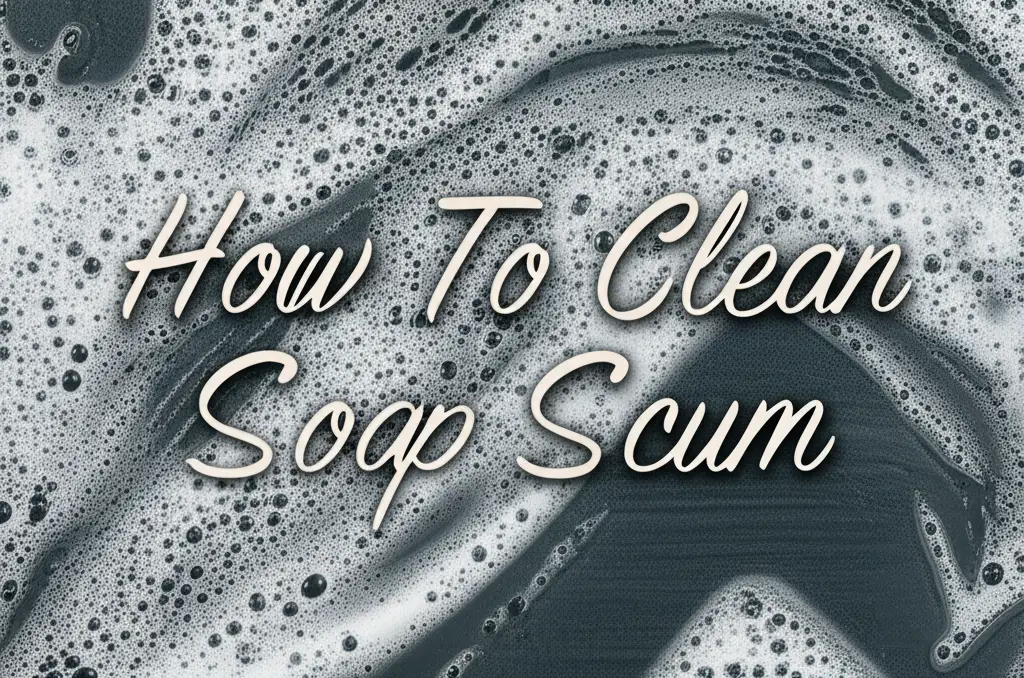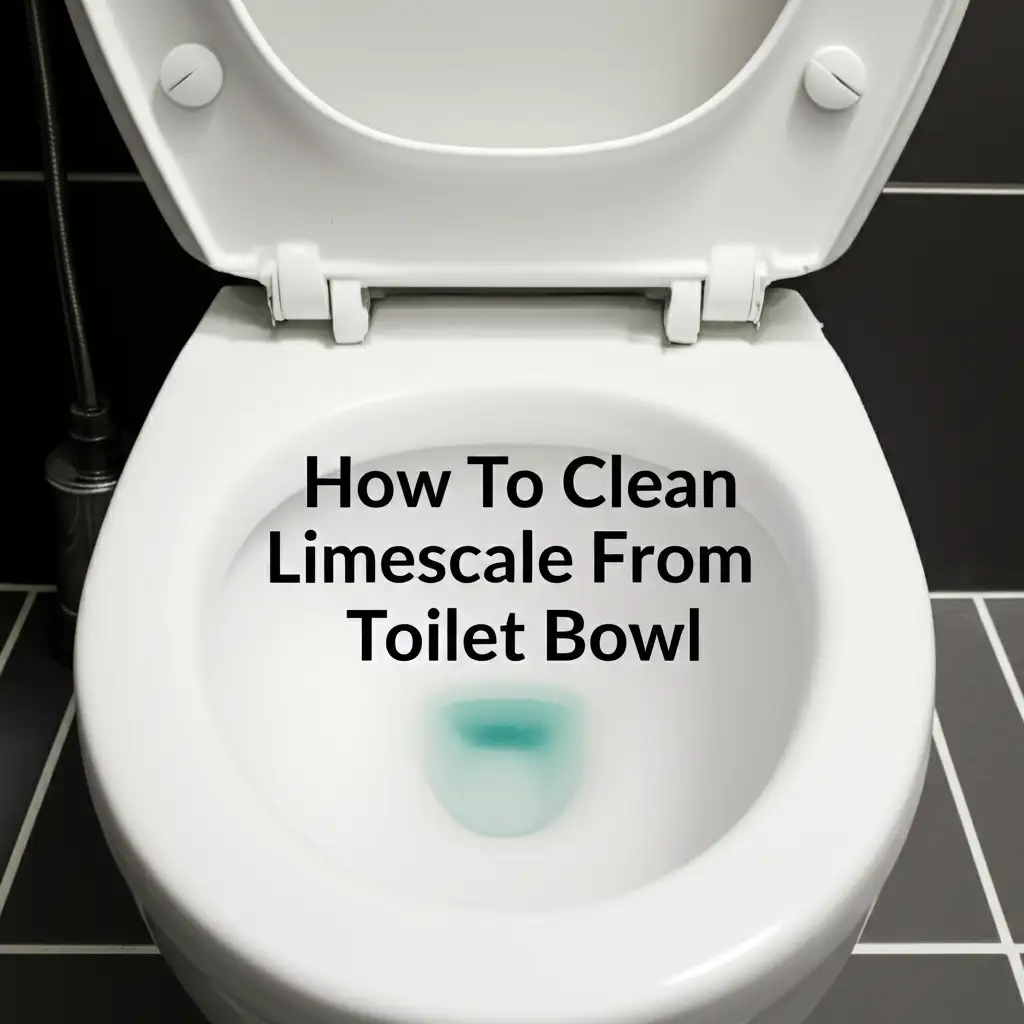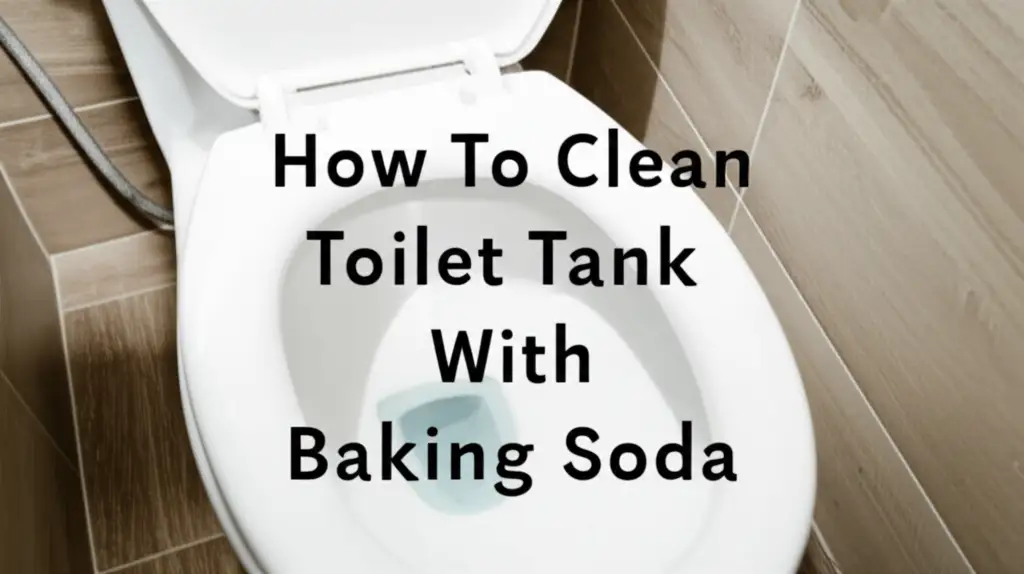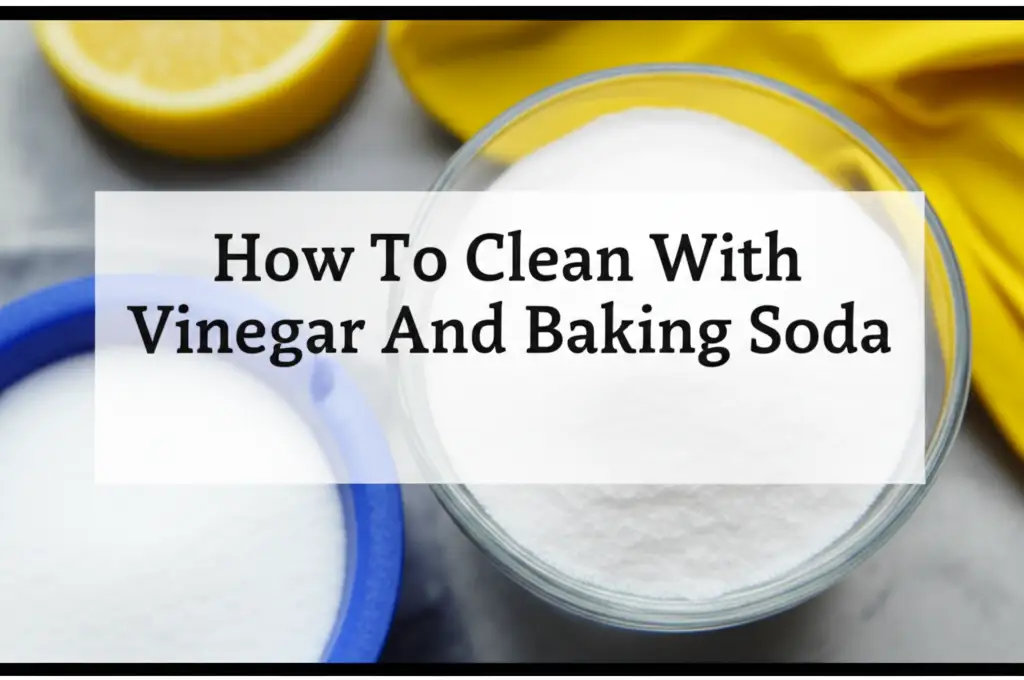· Home Cleaning · 15 min read
How To Clean Shower With Baking Soda
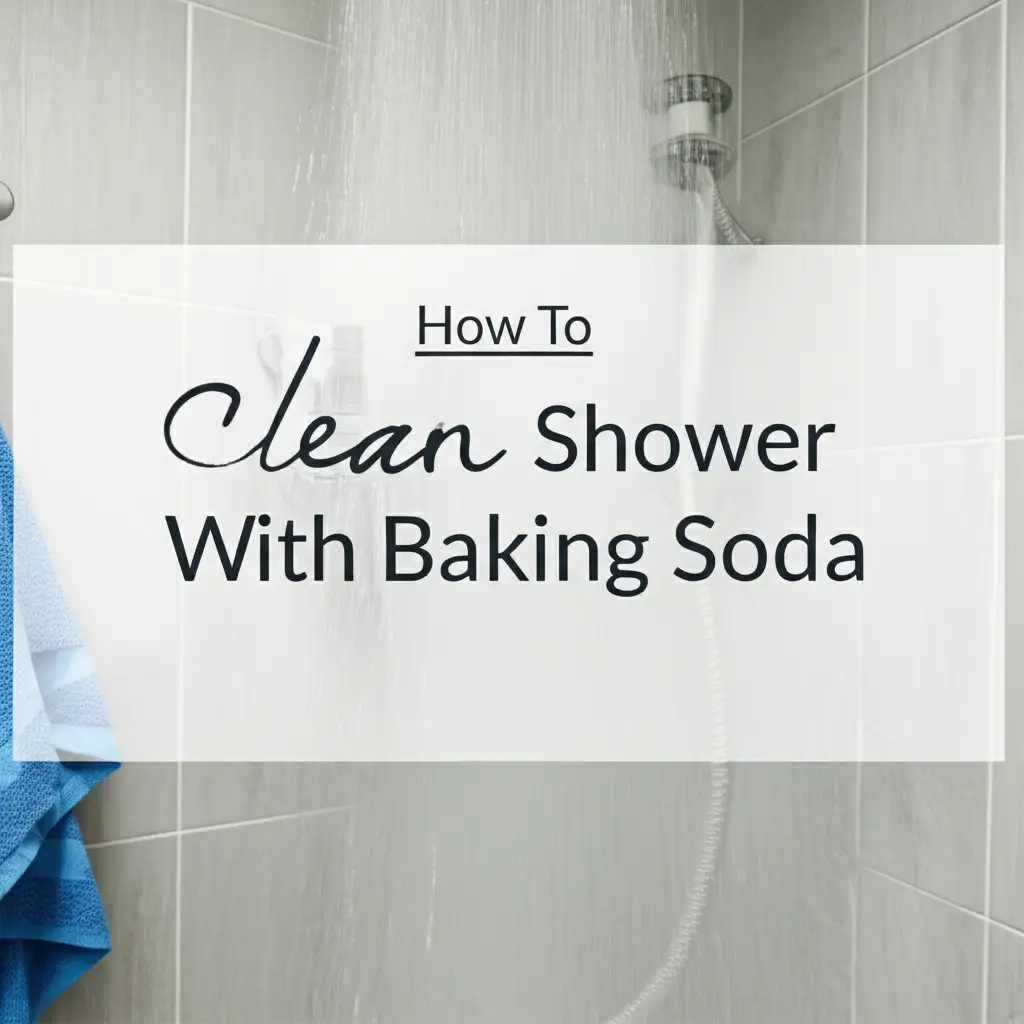
How To Clean Shower With Baking Soda: Your Ultimate Guide
Is your shower looking dull, covered in stubborn grime, or showing unsightly hard water spots? You are not alone in facing this common household challenge. Cleaning a shower can often feel like a never-ending chore. Many commercial cleaners rely on harsh chemicals that raise concerns about safety and environmental impact. Luckily, there is a simple, natural, and highly effective solution right in your pantry. You can easily clean shower with baking soda.
This humble kitchen staple offers a powerful and eco-friendly way to transform your bathroom. I have personally used baking soda for many cleaning tasks. It works wonders on showers. This comprehensive guide will walk you through everything you need to know. We will explore why baking soda is an ideal cleaner. I will outline the essential supplies you need. We will also delve into various cleaning methods for different shower surfaces. You will learn specific techniques for tackling soap scum, hard water stains, and mildew. By the end, you will have all the knowledge to achieve a sparkling clean shower using simple baking soda. Get ready to enjoy a cleaner, fresher bathroom.
Takeaway
- Baking soda is a safe, effective, and natural shower cleaner.
- It tackles soap scum, hard water, and grime without harsh chemicals.
- Combining baking soda with vinegar boosts cleaning power for tough stains.
- Regular maintenance prevents buildup, keeping your shower sparkling.
- Always test in a small area first to ensure surface compatibility.
To clean your shower with baking soda, create a paste with water, apply it to dirty surfaces, let it sit for 10-20 minutes, then scrub thoroughly. Rinse completely with warm water and wipe dry. For tougher stains like soap scum or hard water, a follow-up spray of vinegar can boost cleaning power, creating a fizzing reaction that lifts grime effectively.
Why Choose Baking Soda for Shower Cleaning?
Many people prefer natural cleaning options. Baking soda stands out as a top choice. It offers several compelling advantages over traditional chemical cleaners. First, baking soda is incredibly versatile. It acts as a mild abrasive, a powerful deodorizer, and a gentle whitener. You can trust it with various cleaning challenges.
Safety is another major benefit. Baking soda is non-toxic. It is safe for homes with children and pets. You do not need to worry about harmful fumes or skin irritation. This makes your cleaning routine much healthier. Chemical cleaners often release strong, unpleasant odors. Baking soda helps neutralize bad smells. It leaves your bathroom smelling fresh and clean naturally. It does not just cover up odors.
Furthermore, choosing baking soda is good for the environment. It is biodegradable. It does not pollute water systems. Using baking soda reduces your reliance on plastic bottles and harsh chemicals. This supports a more sustainable lifestyle. It also saves you money. Baking soda is very inexpensive. It performs as well as, or better than, many specialized shower cleaners. You get powerful cleaning at a fraction of the cost. I always keep a large box of it ready for various chores.
Essential Supplies for Baking Soda Shower Cleaning
Getting ready to clean your shower with baking soda requires only a few basic items. Most of these you might already have around your house. Having everything prepared before you start makes the cleaning process smooth. You will need the main cleaning agent, baking soda. Make sure you have a fresh box.
Next, you will need water. This mixes with the baking soda to form a cleaning paste. A spray bottle filled with plain water is also useful for rinsing later. For applying the paste and scrubbing, gather a few tools. A scrub brush with stiff bristles works well for grout lines. A non-abrasive sponge or microfiber cloth is perfect for larger surfaces. I often use a dedicated cleaning brush for shower tiles.
Consider wearing rubber gloves. They protect your hands from prolonged contact with cleaning solutions. This is especially true if you have sensitive skin. Finally, a clean microfiber cloth is essential for drying and polishing. This step prevents new water spots from forming. If you plan to tackle very tough stains, keep a bottle of white vinegar nearby. It partners well with baking soda. Gather these simple supplies. You will be ready to make your shower sparkle.
List of Supplies:
- Baking Soda (Sodium Bicarbonate)
- Warm Water
- Empty Bowl for mixing paste
- Spray Bottle (for water or vinegar)
- Stiff Scrub Brush (for grout)
- Non-Abrasive Sponge or Microfiber Cloths
- Rubber Gloves (optional, but recommended)
- Clean, Dry Microfiber Towels (for drying)
- White Vinegar (for tough stains)
Step-by-Step Guide: Basic Baking Soda Shower Cleaning
Cleaning your shower with baking soda is straightforward. Follow these steps for a fresh, clean result. First, always prepare your shower area. Remove all bottles, soaps, and other items from shelves and ledges. This gives you clear access to all surfaces. Rinse the entire shower thoroughly with warm water. This wets the surfaces and loosens any loose dirt or hair.
Now, prepare your baking soda paste. In an empty bowl, mix about half a cup of baking soda with a few tablespoons of warm water. Add water slowly until you achieve a thick, spreadable paste. It should resemble toothpaste. Adjust the consistency as needed. I usually start with less water and add more gradually. Next, apply this paste generously to all shower surfaces. Focus on areas with visible soap scum, grime, or water spots. You can use your hands (with gloves), a sponge, or a brush to spread the paste. Ensure an even coat.
Let the baking soda paste sit on the surfaces for at least 10 to 20 minutes. For heavily soiled showers, you can let it sit longer, even up to an hour. This allows the baking soda to break down the grime effectively. After the waiting period, it is time to scrub. Use your scrub brush or sponge to work the paste into the surfaces. Apply circular motions. You will see the grime lift away. Finally, rinse all surfaces thoroughly with warm water. Make sure to remove all baking soda residue. Wipe the shower dry with a clean microfiber cloth to prevent water spots. This simple process reveals a noticeably cleaner shower.
Tackling Tough Stains: Baking Soda & Vinegar Power Duo
Sometimes, your shower faces more stubborn enemies like thick soap scum or persistent hard water stains. When basic baking soda cleaning needs a boost, call in its powerful partner: white vinegar. The combination of baking soda and vinegar creates a formidable cleaning agent. This dynamic duo produces a fizzing chemical reaction. This reaction helps lift away tough deposits.
To begin, follow the previous steps for applying the baking soda paste. Ensure a good, thick layer covers all affected areas. This includes glass doors, tiles, and grout lines. Let the baking soda paste sit for the recommended 10 to 20 minutes. This pre-treatment helps soften the grime. After the baking soda has had time to work, spray undiluted white vinegar directly over the baking soda paste. You will immediately notice a bubbling and fizzing action. This is the carbon dioxide gas being released. This effervescence helps to agitate and break down the stubborn mineral deposits and soap scum.
Let the mixture sit and fizz for another 5 to 10 minutes. The longer it fizzes, the more it works on the grime. Then, grab your scrub brush or sponge. Vigorously scrub the surfaces. You should find that the grime comes off much more easily. The abrasive action of the baking soda combined with the acidic power of vinegar is incredibly effective. This method is particularly useful for areas like shower glass. It easily removes unsightly hard water stains and soap scum. You can achieve clear, sparkling glass. I often use this method for my own shower door. For more detailed tips on specific issues, you can learn how to clean with vinegar and baking soda. You might also find specific guides helpful for problems like how to clean hard water stains on shower glass or how to clean soap scum from glass shower doors. Remember to rinse everything very thoroughly with warm water once scrubbing is complete. Wipe dry for a streak-free finish.
Cleaning Specific Shower Surfaces with Baking Soda
Showers consist of various materials. Each surface might need a slightly different approach with baking soda. Understanding these nuances helps you get the best results without causing damage.
Tiles and Grout
Ceramic or porcelain tiles and their grout lines are common shower surfaces. They often accumulate soap scum and mildew. For tiles, use the standard baking soda paste. Apply it evenly. Pay close attention to the grout lines. These porous areas easily trap dirt and grime. Let the paste sit for 15-20 minutes. Use a stiff-bristled brush, like a grout brush or an old toothbrush, for the grout. Scrub vigorously along the lines. The baking soda helps lift embedded dirt. For extra stubborn grout stains, spray vinegar directly onto the baking soda. Let it fizz, then scrub. Rinse thoroughly to reveal bright, clean tiles and grout.
Glass Shower Doors
Glass shower doors are notorious for hard water spots and soap scum streaks. Baking soda is excellent for these. Create a slightly thinner baking soda paste. Apply it to the glass using a soft sponge. Spread it evenly over the entire glass surface. Let it sit for about 10-15 minutes. Then, spray white vinegar over the baking soda. Watch it fizz. Use a non-abrasive sponge or cloth to gently scrub the glass. Avoid harsh scrubbers that might scratch. Rinse with warm water. For a truly streak-free finish, use a squeegee to remove excess water. Wipe down with a clean, dry microfiber cloth immediately. This method brings back the clarity of your glass.
Acrylic and Fiberglass Showers
Acrylic and fiberglass showers are common in many homes. These surfaces are more prone to scratching than tile or glass. Therefore, you must use baking soda gently. Make a slightly thinner paste than usual. Apply it with a soft sponge or cloth. Do not use abrasive scrub brushes. Let the paste sit for a shorter duration, perhaps 5-10 minutes. When scrubbing, use gentle circular motions with a soft sponge. Avoid hard pressure. Rinse very well with warm water. Always dry the surface with a soft cloth to prevent water spots. This gentle approach ensures a clean finish without damaging the material.
Shower Heads and Fixtures
Shower heads often suffer from mineral buildup, reducing water flow. You can use baking soda for these as well. For the shower head, remove it if possible. Mix baking soda with water to form a paste. Apply this paste to the shower head’s nozzles. Let it sit for a few hours or overnight. For chrome or nickel fixtures, make a paste and apply it. Let it sit briefly. Gently wipe with a soft cloth. The baking soda helps polish and remove minor water spots. For persistent hard water on your shower head, you might also find success with methods described in how to clean hard water from shower head. Always rinse all fixtures thoroughly after cleaning.
Advanced Tips for a Sparkling Clean Shower
Achieving a truly sparkling clean shower goes beyond a single deep clean. Regular maintenance and a few smart habits make a big difference. These advanced tips help keep your shower looking its best. They also reduce the frequency of intense cleaning sessions.
First, implement a daily squeegee routine. After every shower, quickly squeegee the glass doors and tiled walls. This simple action removes most of the water droplets. Water droplets contain minerals that cause hard water spots. It also minimizes soap scum buildup. This prevents future problems. I always squeegee my shower door, and it stays much clearer.
Ensure proper ventilation in your bathroom. After showering, leave the fan running for at least 15-20 minutes. If you have a window, open it. Good air circulation dries out the shower area quickly. This prevents the growth of mold and mildew. Mold thrives in damp environments. Reducing moisture is a key preventive step.
Consider using a daily shower spray. You can make your own. Mix half a cup of white vinegar, half a cup of water, and a tablespoon of rubbing alcohol in a spray bottle. Add a few drops of essential oil for scent, if desired. Spray this solution on shower surfaces after your last shower of the day. Do not rinse it off. This helps to break down soap scum and mineral deposits before they harden. It extends the time between deep cleans.
For light mold and mildew, baking soda can help. Mix baking soda with a little dish soap and water to form a thick paste. Apply it to the affected areas. Let it sit for an hour. Scrub with a brush, then rinse. For heavy mold, you might need stronger solutions or professional help. These tips will help you maintain a consistently clean and inviting shower.
Safety Precautions and Best Practices
While cleaning your shower with baking soda is generally safe, following a few precautions ensures a smooth and effective cleaning process. These practices protect both you and your shower surfaces. Always prioritize safety first.
First, ensure adequate ventilation. Even though baking soda and vinegar are natural, their reaction produces carbon dioxide gas. Good airflow helps disperse any fumes. Open windows or turn on the exhaust fan. This keeps the air fresh and prevents any potential respiratory irritation. I always open my bathroom window when I clean.
Before applying any cleaning solution to your entire shower, test it. Choose an inconspicuous area. Apply a small amount of the baking soda paste or baking soda-vinegar mixture. Let it sit for a few minutes. Then, rinse and check for any discoloration or damage. This step is especially important for natural stone surfaces like marble or granite. These materials are sensitive to acids like vinegar. While baking soda is generally safe, vinegar can etch some natural stones.
Never mix baking soda and vinegar with commercial cleaners. Combining different cleaning agents can create dangerous fumes. Some combinations can even be explosive. Stick to one cleaning method at a time. If you use a commercial cleaner, rinse the shower completely before applying baking soda or vinegar.
Wearing rubber gloves is a good practice. While baking soda is gentle, prolonged contact can dry out your skin. Gloves protect your hands from potential irritation. After cleaning, rinse all surfaces thoroughly. Any leftover baking soda residue can leave a white film. A complete rinse prevents this. Finally, always dispose of cleaning waste properly. Rinse brushes and sponges well. Store your baking soda in a dry place for future use. These simple steps ensure a safe and effective shower cleaning experience every time.
FAQ Section
Is baking soda safe for all shower surfaces?
Baking soda is generally safe for most shower surfaces. These include ceramic tile, porcelain, fiberglass, and acrylic. However, avoid using baking soda with vinegar on natural stone like marble or granite. The acidity of vinegar can etch or dull these surfaces. Always test a small, hidden area first if you are unsure.
Can I use baking soda and vinegar together on my shower?
Yes, you can use baking soda and vinegar together on your shower for tougher stains. Apply the baking soda paste first. Then spray white vinegar over it. The fizzing reaction helps lift soap scum and hard water deposits. This combination is effective for glass, tile, and fiberglass surfaces. Rinse thoroughly after use.
How often should I clean my shower with baking soda?
The frequency depends on usage and water hardness. For general maintenance, a baking soda clean once a week or every two weeks is often sufficient. If you have hard water or multiple people use the shower daily, you might need to clean more often. Regular light cleaning prevents heavy buildup.
Does baking soda remove mold and mildew from showers?
Baking soda can help remove light mold and mildew growth. Its mild abrasive and deodorizing properties are effective. For deeper or extensive mold, you may need a stronger solution. Always ensure good ventilation when cleaning any mold or mildew. Address the root cause of the moisture.
What is the best way to maintain a clean shower after using baking soda?
To maintain a clean shower, use a squeegee on glass and tiles after every shower. Keep the bathroom well-ventilated by running the exhaust fan. You can also use a daily shower spray solution. This proactive approach prevents soap scum and hard water from accumulating. It keeps your shower cleaner longer.
Conclusion
Cleaning your shower does not have to involve harsh chemicals or endless scrubbing. As we have explored, baking soda offers a powerful, natural, and effective solution. You can transform your bathroom into a sparkling sanctuary. We covered why baking soda is an excellent choice for its safety and cleaning power. We outlined the simple supplies you need to get started. You learned the basic steps for a routine clean. We also dove into tackling tough grime with the potent combination of baking soda and vinegar. Remember how effective this duo is on soap scum and hard water.
This guide also provided specific methods for cleaning various shower surfaces. You now know how to care for your tiles, glass doors, and acrylic surfaces. Plus, you gained valuable tips for maintaining a consistently clean shower. These tips help prevent future buildup. Embracing baking soda for your shower cleaning routine is a smart move. It saves you money. It protects your health. It also benefits the environment. I encourage you to try these methods in your own home. Experience the satisfying results of a naturally clean and fresh shower. Your bathroom will thank you for it. Start cleaning your shower with baking soda today!
- baking soda cleaning
- shower cleaning
- natural cleaning
- soap scum removal
- hard water stains
- eco-friendly cleaning
- DIY cleaning

